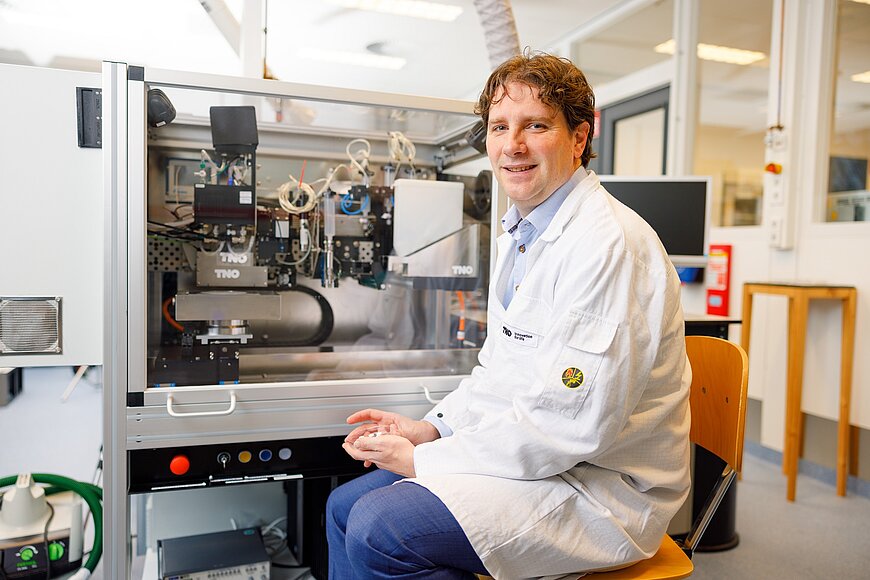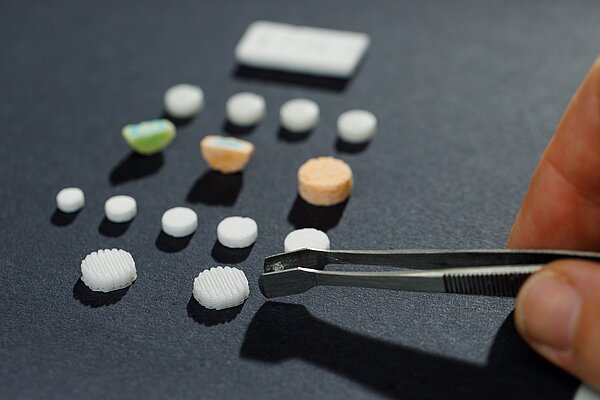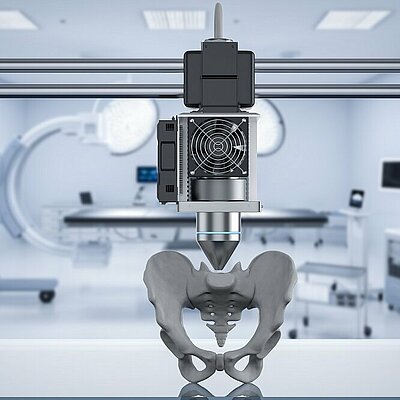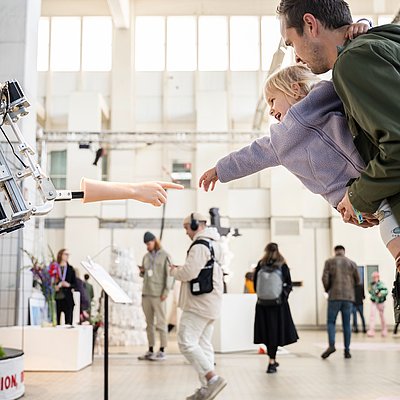Tailor-made medicine: a solution for anyone who is not a six-foot-tall man
Start-ups, suppliers and scientists in Brainport here in the Netherlands are working on the medical technology of the future. Pieter Debrauwer is pioneering the 3D printing of medicines at the Netherlands Organisation for Applied Scientific Research (TNO).

Medicines roll off the production line in their millions - usually in two or three standard dosages. But a five-year-old child needs very different quantities of an active ingredient than an adult man who stands six feet tall. "Let's say a pill has a dosage of 500 milligrams of active ingredient, while a doctor would rather prescribe 50 milligrams to a child. Breaking a tablet into ten pieces is possible, but highly labour-intensive and the risk of making mistakes is high," says Pieter Debrauwer, Food and Pharma Printing research manager at TNO. Personalised medicines are gaining in popularity. 3D printing can offer a solution: this technique enables very precise dosages and smaller batches do not present an obstacle.
Layer by layer
The technique behind printing medicines works as follows: A specific formula of substances is printed from a syringe. The platform where the formula is deposited moves back and forth under the syringe. This is how a pill is built up layer by layer. Furthermore, it will soon be possible to combine different medicines in one pill, so that patients no longer need to take all kinds of different tablets.
Using this technique, TNO can print minuscule tablets with a dosage starting at a few milligrams of active ingredient. Small tablets are advantageous especially for children. Medicines are currently often liquefied for them to achieve the right dosage. This is an option, but is also labour-intensive and these drinks tend to have a bitter aftertaste. Moreover, mistakes can easily be made when administering them - for instance, by parents - which means that children still get the wrong dosage.

Precision technology
The complexity lies mainly in the precision element as very precise work has to be done on a microscale to achieve the exact dosage. "This calls for an understanding of the behaviour of the material in combination with mechatronic expertise to operate the printer on a micrometre scale. We also need to avoid any abnormalities; all it takes is a tiny air bubble in the material to cause a deviation."
With this new way of preparing medicines, it is also crucial that work is done in an extremely clean and orderly way. "If you print a phone case, it doesn't matter that the machine isn't completely clean. When it comes to printing medicines, the printers have to meet very stringent hygiene standards." For example, the design of the printer must take into account that there are no gaps and holes where material can be left behind and the printer must be made of material that is easy to keep clean.
Laws and regulations
The customisation of medicines is not new in the pharmaceutical industry. In Dutch pharmacies, some medicines are still prepared in-house (magistral preparation). However, this practice has declined because quality standards and the amount of work involved are high and facilities to prepare medicines in-house are not always financially viable. 3D printing can breathe new life into the production of customised medicines, according to Debrauwer.
How do you then prove that a 5-milligram print is not 6.3 milligrams? The research manager does not yet have a clear-cut answer. "It is a very precise and safe process, but also a new one. We therefore still have to prove ourselves. We cannot do this alone; we need the help of pharmacists, hospitals and pharmaceutical companies."
Connecting two worlds
3D printing technology is not new to TNO - they have been printing materials in 3D for over 25 years, including for the food industry. What is new, however, is the pharmaceutical industry and all the legal criteria and specifications that are involved in making medicines. This is why TNO holds a lot of meetings with, for instance, pharmacists, the Healthcare Inspectorate (IGZ) and pharmaceutical companies.
Debrauwer notices that the high-tech region Brainport and the pharma-campus Pivot Park in Oss are slowly but surely drawing closer to each other. "When it comes to mechatronics, Brainport has everything in house: Parties that understand 3D printing, software, ICT and the makers. What we don't have in Brainport are the practical applications. Eventually, pharmaceutical companies in Oss will have to use our technology.” Debrauwer sees the adoption of 3D printing in the pharmaceutical industry as an excellent opportunity for Pivot Park and Brainport to work together more closely.
Applications for 3D printing techniques
For instance, TNO is looking into the printability of materials together with pharmaceutical companies such as DFE Pharma, Merck and Phoenix. "We are exploring how we can make pills with different compositions faster and easier," says Debrauwer.
Pharmaceutical companies also benefit from this, they use the technique for the research phase of medicines. "The development of a medicine takes twelve years on average. By using a 3D printer, you can quickly and flexibly produce small quantities of pills, which speeds up the whole process considerably. What's more, the pharmaceutical industry gets to gain experience with the 3D printing process this way."

In order to actually apply the printing of medicines in practice, TNO is also working in close cooperation with the hospital pharmacy and children's department of Erasmus MC as well as health insurers, companies in digital technology and ICT.
Debrauwer anticipates that more and more initiatives and examples of 3D printing technology in practice will materialise over the coming years. "But before the first, innovative pharmacists in the Netherlands order a cartridge, put it in a 3D printer and can print customised medicines, we’ll probably be two or three years down the line." The research organisation wants to use the technology to help improve the quality of medicines and keep healthcare affordable. So that anyone who is not a six-foot tall man can also be prescribed the appropriate dosage of a medicine.

